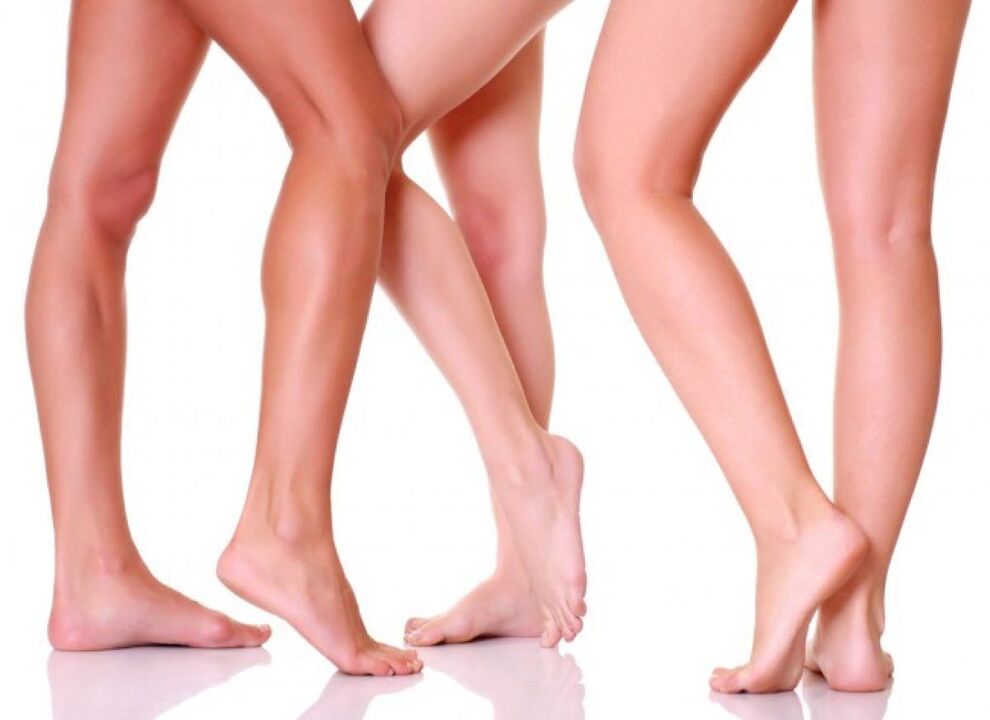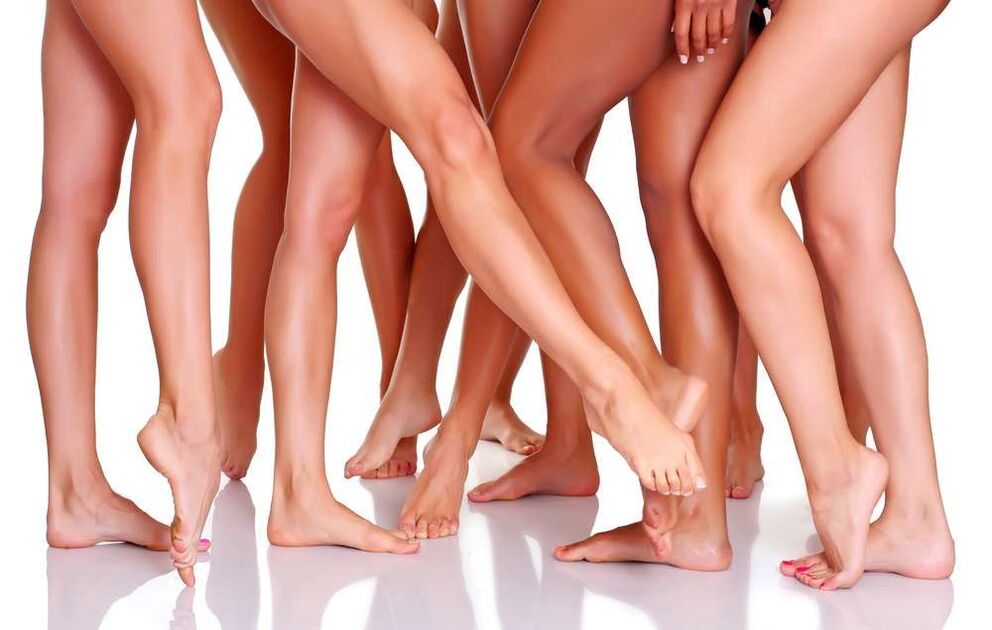The information in this section is not intended to be used for self-diagnosis or self-medication. In the event of pain or any other aggravation of the disease, diagnostic tests should only be prescribed by the attending physician. For a diagnosis and the right appointment for treatment, you should contact a specialized specialist.

Varicose veins are one of the most common vascular diseases. It affects around 25% of women and 10% of men worldwide. This disease is a pathological process in which the veins swell and protrude. It is caused by poor patency of the blood vessels. As a result, blood accumulates and expands their walls. They become too thin, which is noticeable in a bluish network on the skin. The main reason for the development of the disease is considered to be hormonal changes. Menstrual cycle, pregnancy, labor, and menopause are reasons women are more prone to this disease and more interested in its treatment than men.
Signs of varicose veins in women
Very often, patients miss the initial stages of the disease. They attribute the symptoms associated with the disease to general ailments, uncomfortable shoes, bad weather conditions, a drop in air pressure, etc. Such tactics are wrong. It is very important to note the main signs of varicose veins in their early stages. In this case, its treatment will be easier and faster. The most common symptoms of the disease include:
- Swelling of the feet. It is worth noting that the limbs are cast both at the same time and separately.
- Vascular network on the skin of the legs.
- Itching and burning in calves.
- Increased pigmentation of the skin of the legs.
- The vessels on the lower extremities are clearly visible to the naked eye.
- Great heaviness in legs, worse in the evening.
- Cramps in the lower extremities.
In addition to the above characteristic manifestations, the veins in the legs acquire increased sensitivity. A woman feels painful sensations when palpating. Bruises and wounds on the legs do not heal for a long time. Even the smallest blows cause injuries. The limbs eventually become covered with wounds. All of these symptoms worsen after prolonged standing or exercise. If you find at least one or more of these manifestations at the same time, you should immediately contact a qualified specialist.
The reasons for the development of the disease
As a rule, the disease occurs against the background of the individual characteristics of the organism, which depend on the patient's lifestyle and genetic predisposition. The main congenital cause of the development of the disease is considered to be excessive weakness of the venous valve apparatus. However, the factors that cause this disease are well known to medicine. The most common are:

- systematic standing while standing;
- sedentary work;
- sedentary lifestyle;
- Obesity;
- excessive physical activity;
- uncomfortable shoes;
- Bad habits.
In addition, due to pregnancy, women are prone to this disease. Varicose veins of the lower extremities can manifest themselves both directly during childbirth and after childbirth.
Very often the pathology of the cardiovascular system is a provoking factor. They are accompanied by problems with blood flow to the veins. This leads to chronic valve failure. Against the background of these processes, the blood in the veins stagnates. It overwhelms them and promotes stretching. The knot and seal are formed. Over time, deformation of the vessel walls occurs. Under the influence of these processes, the trophism of the legs is disturbed. Complications occur on the calves in the form of long-term non-healing wounds.
Which doctor should I go to?
The disease is not only an aesthetic problem, but also brings with it significant discomfort and can lead to dangerous consequences. Therefore, at the first uncharacteristic changes in well-being, a woman should seek medical help. First of all, you should see a therapist. This doctor listens to the patient's complaints and recommends that she contact a close specialist. Diagnosis and treatment of this pathology is carried out by:
- Phlebologist
- Vascular surgeon
Before saying how to treat varicose veins on the legs in women, the doctor should familiarize himself with the clinical manifestations. To do this, he conducts a survey in which he asks the patient:

- How long have you been worried about unpleasant sensations?
- How much time do you spend on your feet?
- Are you bothered by the swelling of the lower extremities?
- What does your job relate to?
- What chronic illnesses have you had in the past?
- Is there a genetic predisposition to the disease?
- Do you use hormonal supplements?
After the conversation, the doctor examines and palpates the affected limbs. He will also appoint the conduct of instrument and laboratory tests. Your results will allow the most accurate diagnosis to be made.
Conservative treatment of varicose veins on the legs in women
As soon as the doctor receives the test data, he will begin to work out a therapeutic procedure aimed at eliminating the disease. The method of treatment is chosen on a case-by-case basis. In the initial stage, specialists resort to conservative therapies. This type of treatment involves the use of drugs from the following groups:
- Phlebotonikov. They relieve cramps.
- Analgesics. These drugs relieve pain.
- Drugs that reduce the risk of thrombosis.
Also, many experts recommend that women wear compression underwear. The stockings are selected by the doctor. It also explains how to use them properly. You should avoid going to the sauna or hot baths during the treatment. High temperatures expand the wow and reduce its tone. Doctors recommend visiting the pool 2-3 times a week.
Diet also plays an important role in getting rid of the disease. A woman with varicose veins should refuse:
- Flour;
- Coffee and tea;
- Sweet;
- fat and fried.
You should enrich the diet with freshly squeezed juices. These can be citrus, blueberry and apricot nectar. If the doctor determines a high risk of thrombosis, he should recommend the use of pumpkin juice. Fasting days also have a positive effect. They enable the body to get rid of toxins and excess weight. You do not have to spend such days more than three times a month. In some cases, doctors will prescribe hirudotherapy. It also has a beneficial effect on the condition of the vessels of the lower extremities.
Operative treatment
If the disease has progressed, then you can not do without the intervention of a vascular surgeon. This specialist performs the surgical treatment of varicose veins in the lower extremities. The most popular and effective methods are:
- Coagulation. It can be laser or radio frequency. Today this type of treatment is performed under local anesthesia and enables outpatient recovery.
- Phlebectomy. This type of treatment is aimed at removing knots and removing deformed veins.
- Sclerotherapy. It ensures a point injection. In some of the most severe cases, the procedure is performed under the supervision of an ultrasound machine.
All of the above techniques are aimed at removing pebbles and seals. After the operation, it is important to make every effort to avoid recurrence. Therefore, all appointments of the attending physician should be kept.




































